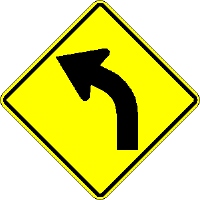 Bear Left!
Bear Left! Bear Left!
Bear Left!How to be a Philanthropist Without Really Trying
Tim Francis-Wright
Andrew Fastow is the former chief financial officer of Enron Corporation. He left the company in October 2001 as news came out that he had used a number of partnerships to enrich himself and some of his colleagues at Enron and elsewhere, all at the expense of Enron's shareholders. Fastow used one of those partnerships to exploit a loophole in the tax code that allowed him to look like a major philanthropist at little cost to himself, and to avoid paying any taxes on over $4,000,000 of ill-gotten gains.
By donating property that had appreciated in value, Fastow could write off the appreciated value of the property without recognizing any capital gains taxes. In his case, Fastow owned part of a partnership called Southampton Place LP that cost him $50,000. Shortly after donating that property to the foundation, it sold the Southampton partnership interest for a cool $4,515,886. Of course, the only reason that his share of Southampton LP was worth so much money was that Fastow had cheated Enron out of that money.
At the end of 2000, the Fastow Family Foundation had well over $4,000,000 in the bank and had started making charitable contributions to worthy causes in Houston, Texas. The website guidestar.org has a copy of the foundation's 2000 tax return, as it does for almost every charitable American organization. The return shows that Fastow contributed a partnership interest to the foundation on 16 March 2000 that had a cost to him of $50,000. It is important to remember that in 2000, Enron was still a Wall Street darling, and Fastow and his boss, Ken Lay, were still the toast of Houston.
By donating his appreciated partnership interest, Fastow could claim its full market value as a charitable deduction without paying a dime in capital gains taxes. If he was in the top tax bracket at the time, he would have saved a substantial amount of money: a deduction of $4,515,886 would be worth $268,244 in tax savings to someone in the 39.6% top bracket at the time. (Most taxpayers multiply the charitable deduction by their tax rate, but Fastow surely earned enough in 2000 to have 85% of his itemized deductions disallowed. Therefore, his $4,515,886 deduction got multiplied by 39.6%, then by 15%. One of the sneakiest provisions of the Bush tax cut is that it eliminates the phaseout of itemized deductions for rich taxpayers, starting in 2006).
After his financial engineering was complete, Fastow had, for the cost of merely $50,000, received a tax break of over $250,000, and established a charitable foundation that he controlled. However, at least in 2000, the Fastow Family Foundation was not particularly generous. A private foundation must give away at least five percent of its average assets every year in order to maintain its tax-exempt status. The calculations in its tax return show that the Fastow Family Foundation needed to distribute at least $119,795. It paid $92,459 in taxes to the federal government, and reported $93,203 in charitable expenditures. Together, these figures are more than the minimum required distribution. But somehow the foundation spent $30,353 in unspecified "professional and other expenses" to make 15 donations totaling $62,850.
Other Enron executives have established charitable foundations of their own, and it will may prove illuminating to see what sorts of activities those foundations have when the 2001 returns are available. Ken Lay was in a double bind: if his foundation sold its Enron stock, then he would be liable for insider trading; if not, he might be guilty of neglecting his fiduciary duties. Jeffrey Skilling's foundation was active all throughout 2000, but had no Enron-related assets in it. Joseph Sutton and Lou Pai each had foundations that were not yet going concerns in 2000. Andrew Fastow proved that at least one Enron executive knew how to launder his partnership profits and look good while doing it. Others may have followed in his footsteps.
Bear Left!:
link library |
archives |
privacy statement |
about us
mailing list |
home (with this week's columns and links)